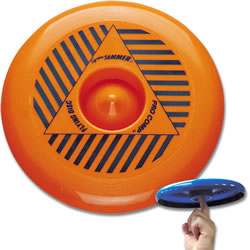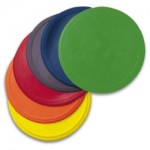Scooters
- Scooters are not skateboards, no standing on them. Start moving when you are on your scooter (Never run and jump on your scooter).
- Get on your scooter and move in one of the six ways listed below.Set this up in your gym by putting half of your class spread out on the line at one end of the gym and the other half on the opposite end. Students will practice moving using all of the following methods. It’s important that students know that these are the only safe ways to move on your scooters. It also helps to have students make the effort to avoid collisions at the center of the gym.
- The students follow the directions for each of the following movements by moving to the opposite end of the gym on the teacher’s signal, turning around and waiting for the next direction.
- Walk Forward: Pull forward with feet only – Hands on side handles
- Walk Backward: Push backward with feet only -hands on handles, turn head around slighltly to see behind you
- Arm Pull Forward: Lie on scooter and balance, use hands only to pull your body forward.
- Alligator: Lie on scooter – Use hands and feet
- Double Knee Coast: Both knees on scooters –
- Use hands to pull yourself forward
- One Knee On: Use the foot on the floor to propel yourself forward, while both hands hold onto the side handles.
Musical Scooters Warmup Activity
- Students move in one of the modes from above.
- When the music stops, spin yourself by using your hands only
- Variation: Do a dead bug, by flipping on to your back, holding the scooter in the air and shaking your scooter and legs in the air.
Indy 500:
Setup and Equipment
- Six color teams and six scooters
- Set color team cones in a large track formation near the center of the gym to make a race track. Set the cones up so that there is one at each of the short end of the track and two on each of the long sides (straightaways) of the track.
- Line up each team beside the cone of their team facing in a clockwise directions.
Guidelines for Indy 500
- This will be a race around the outside of the cones. You’ll be lining up like it’s a 400 meter relay on the track.
- Break into pairs by your team’s cone. The partner can only push when traveling around the curves. The driver has to glide or make themselves move on the straightaways.
- When you get back to your starting part, change places or let your other partners take a turn. Continue taking turns moving around the track.
- How many laps can your team do in five, or maybe 10 minutes?
Glide Control
- Two partners from each team line up at the black line in the front of the gym. One is standing, the other is sitting on the scooter.
- On the teacher’s signal, the person in back leans down low and pushes their scooter partner towards the climbing wall;
- When they hit the wall or calmly stop before hitting the wall, pick up the scooter and run it back to the front of the line
- The scooter is handed off to the next people in line and they now go to the end of the line.
Scooter Games:



